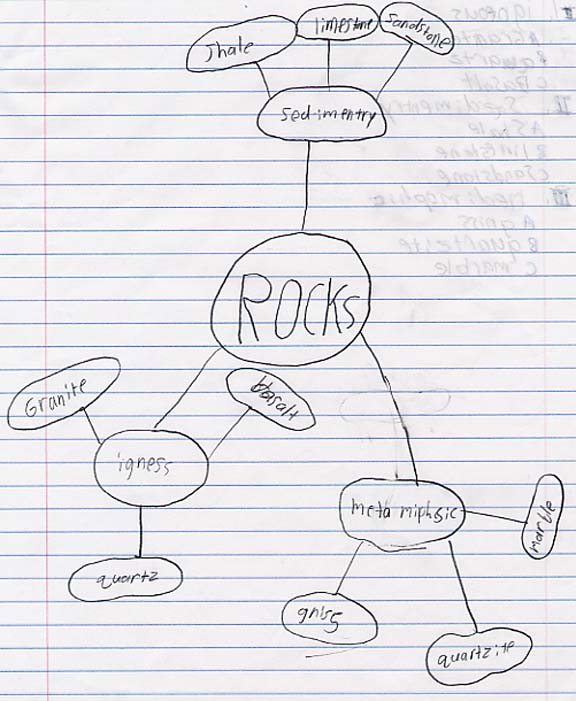A popular graphic representation, often called a semantic map or a cognitive map, helps students identify important ideas and shows how these fit together. A semantic map has three components:
(1) Core question or concept; (2) Strands; and (3) Supports. Students use the semantic map as an organizational tool that illustrates visually the categories and relationships associated
with the core question or concept under study." (Content Reading by Vacca & Vacca, pp. 403-404).

Back to Index
Copyright 2001 Shawn
Hodges